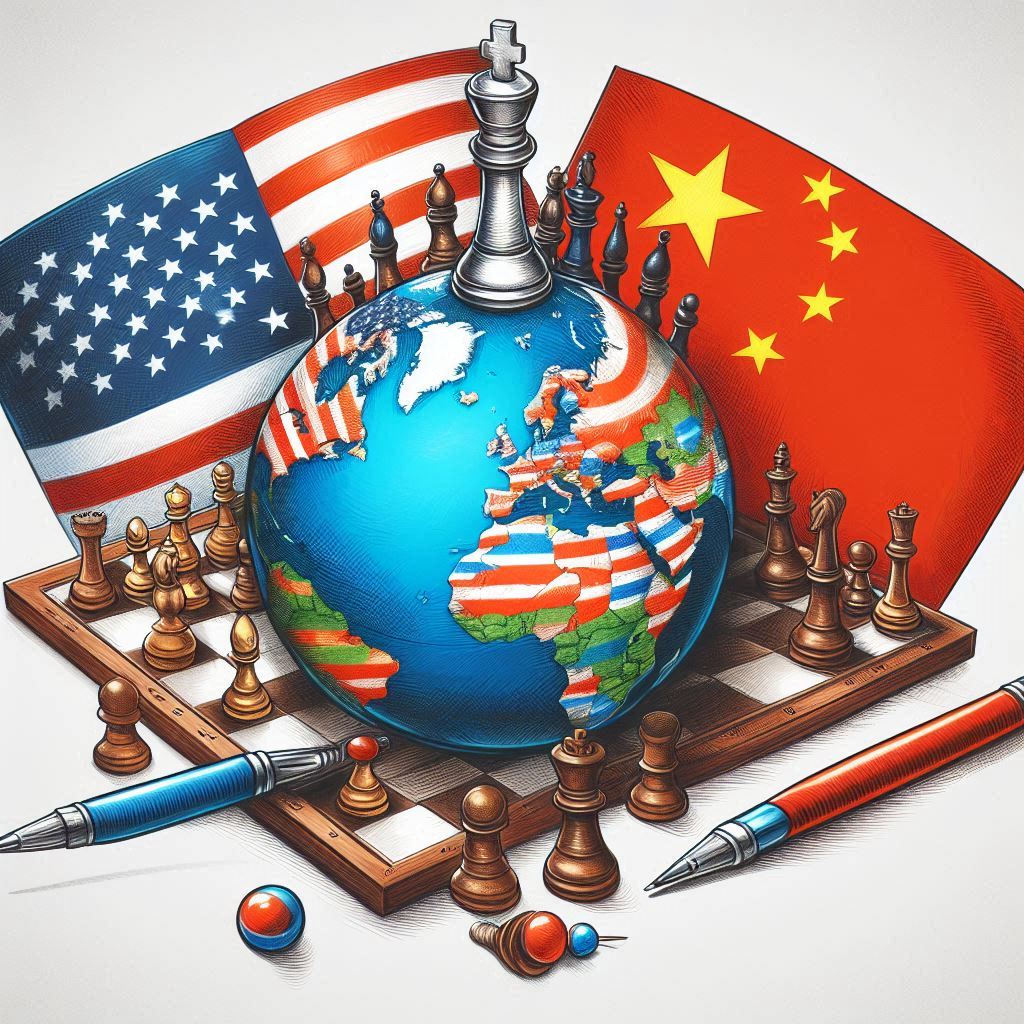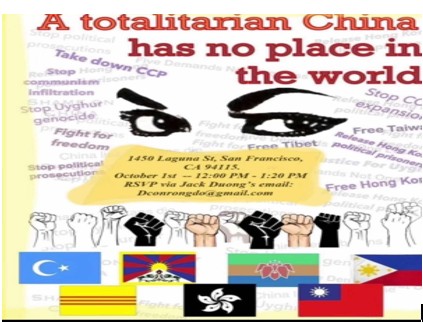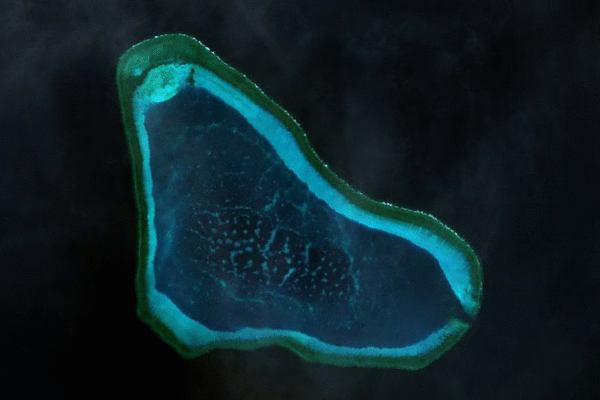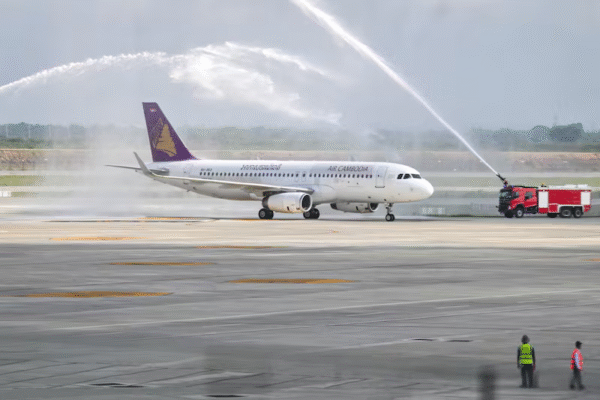
Category: East Asia

Chinese Influence Operations in Sri Lanka
This comprehensive report examines China’s growing influence operations in Sri Lanka, particularly in the media landscape. From pro-China narratives in leading newspapers to state-owned collaborations with Xinhua and CGTN Sinhala, Beijing has entrenched its presence across print, broadcast, and digital platforms. The report also highlights the role of local influencers, think tanks, and Confucius Institutes in amplifying China’s soft power. While these efforts project a positive image of Beijing, they raise serious concerns about press freedom, debt dependency, and the erosion of independent discourse in Sri Lanka.
Hong Kong, parts of southern China shut down ahead of typhoon
Residents and businesses hunkered down in Hong Kong and at least 10 cities in southern China on Tuesday as Super Typhoon Ragasa, the most powerful tropical cyclone of the year, barreled toward land. Authorities urged residents to stay in their homes, where people taped up windows to protect against high winds. Supermarket shelves emptied in some areas as panicked residents stocked up on supplies. Residents in Hong Kong stock up on supplies at a supermarket to prepare for the approaching Typhoon Ragasa on Sept. 22, 2025.(Tyrone Siu/Reuters) Packing winds of up to 220 km per hour, or 137 miles per hour, Ragasa is expected to pass around 100 km to the south of Hong Kong on Wednesday, the Hong Kong Observatory reported just before 1 a.m. local time. Residents should prepare for “heavy squally showers and thunderstorms” and “overtopping waves over the shoreline,” particularly on the eastern and southern coasts, the Observatory said. A reporter for Agence France-Presse saw waves nearly five meters high crash into the seaside promenade of the city’s Heng Fa Chuen residential district around nightfall. The storm is expected to make landfall from midday to late Wednesday along the coast of Guangdong, where authorities evacuated more than 770,000 people, according to state broadcaster CCTV. On Monday, Ragasa tore through the northern Philippines, where thousands sought shelter in schools and evacuation centers. In Taiwan, officials said that 30 people were missing in the eastern county of Hualien, where a barrier lake in the mountains burst as Ragasa stormed through. Includes reporting from Agence France-Presse and Reuters. We are : Investigative Journalism Reportika Investigative Reports Daily Reports Interviews Surveys Reportika
Kim open to talks if U.S. drops denuclearization demand
North Korean leader Kim Jong Un said he is open to talks with the United States, but only if Washington drops its demand that Pyongyang abandon its nuclear weapons program. Kim made the remarks during a recent session of the Supreme People’s Assembly, state-run Korean Central Television (KCTV) reported Monday. He said he has “good memories” of President Trump from their previous summits and would consider talking if the United States changes its stance. The statement marked Kim’s first public response to Trump’s recent overtures and underscored the gulf between the two sides. Dropping the U.S. goal of North Korean denuclearization would represent a major shift in American policy and a significant concession to Pyongyang. Trump has continued to tout his personal rapport with Kim, but the White House told Reuters in July that the ultimate objective of U.S. policy remains the complete denuclearization of North Korea. The two leaders surprised the world with an impromptu meeting at the Demilitarized Zone in 2019, when Trump briefly stepped across the border into North Korea to shake Kim’s hand — a symbolic moment that underscored their unconventional diplomacy. Kim also stressed he has no intention of resuming dialogue with South Korea, a key U.S. ally that helped arrange the earlier Trump-Kim summits during Trump’s first term. Tensions on the peninsula have deepened as Kim accelerates weapons development and strengthens ties with Russia amid the war in Ukraine. In a separate interview with the BBC, South Korean President Lee Jae Myung said he would support a deal in which North Korea freezes production of its nuclear weapons rather than fully dismantling them, if such an agreement could be reached between Trump and Kim. We are : Investigative Journalism Reportika Investigative Reports Daily Reports Interviews Surveys Reportika

Protest Rally Against China Planned in San Francisco on October 1, 2025
On Oct 1, 2025, a protest rally will be held in front of the Chinese Consulate in San Francisco. Organized by rights groups, it will spotlight China’s repression of Uyghurs, Tibetans, Hong Kongers, and Inner Mongolians, and oppose CCP expansionism.

A Chinese international student and activist goes missing during a trip home
A 22-year-old Chinese student-activist, Zhang Yadi, has gone missing in China after returning from France. Rights groups say her case highlights Beijing’s transnational repression of overseas activists and growing crackdowns on Tibet-related advocacy.
Analysis: Kim Jong Un’s daughter steps into ‘successor spotlight’
RFA Perspectives — North Korea’s Kim Jong-un recently visited Beijing with his daughter, Kim Ju Ae. South Korea’s intelligence agency suggests she may be stepping into the “successor spotlight.” Video: Kim Jong Un’s daughter could be North Korea successorMany expected Kim Ju Ae to appear at Beijing’s iconic sites, similar to how Belarus President Alexander Lukashenko’s son, Nikolai, appeared at China’s Tiananmen military parade 10 years ago. But that didn’t happen. During Kim Jong-un’s 54-hour stay, Kim Ju Ae was never seen at official events. According to the South Korean spy agency, she mainly stayed at the North Korean embassy, avoiding public exposure. Still, the agency believes Kim Ju Ae is a likely future leader. Reuters(North Korean leader Kim Jong Un and his sister Kim Yo Jong attend a meeting with South Korean President Moon Jae-in at the Peace House at the truce village of Panmunjom inside the demilitarized zone separating the two Koreas, South Korea, April 27, 2018. ) “I’ve always believed since we heard news about the daughter of Kim Jong-un, that being a member of this family with the Paektu lineage would be more important than the gender,” Jean H. Lee, a North Korea expert and Presidential Chair of the East-West Center. “And similarly, if you look at monarchies of the past in a very. I think male-dominated eras, countries that being a member of that family, whether you’re male or female, have been more important.” We are : Investigative Journalism Reportika Investigative Reports Daily Reports Interviews Surveys Reportika

China to Create “Nature Reserve” on Disputed Scarborough Shoal
China announced on Wednesday that it will establish a nature reserve on Scarborough Shoal, a contested chain of reefs and rocks in the South China Sea, sparking renewed concerns about Beijing’s expanding territorial ambitions in the region.

Chinese-Built $2 Billion Airport Opens Near Phnom Penh
The inaugural flight — an Air Cambodia plane from China — was greeted with a ceremonial water salute, marking the official opening of the three-runway, 10-square-mile airport located about 20 kilometers (12 miles) from the capital.

U.S. House passes Uyghur Policy Act supporting victims of persecution by China
WASHINGTON — The House passed the Uyghur Policy Act on Tuesday, a bill that advances a strategy for the United States to support Uyghurs and other ethnic minorities enduring persecution at the hands of China’s government.


